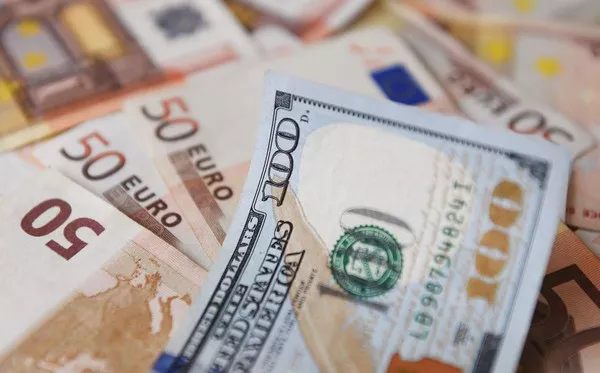The US dollar managed a modest recovery from a three-month low on Thursday, although it remains on track to record its most significant monthly decline in a year. Investor sentiment is influenced by the prevailing belief that the Federal Reserve is concluding its rate-hiking cycle, with a key inflation report anticipated later in the day.
The euro faced a decline following lower-than-expected French consumer prices data, contributing to concerns after Germany and Spain also reported slowing price growth. This sequence raises apprehensions about the forthcoming euro area figure. The dollar index, gauging the US currency against six major counterparts, exhibited a 0.35% rise to 103.18, recovering from Wednesday’s low of 102.46, the weakest since August 11.
November has seen the dollar weaken by approximately 3.3%, propelled by growing expectations that the Federal Reserve may initiate interest rate cuts in the first half of 2024. Mohamad Al-Saraf, Associate of FX and Rates Strategy at Danske Bank, notes that the primary factors driving the dollar’s weakness this month include benign inflation data and indications of labor market loosening, contributing to an environment unfavorable for the dollar.
Market attention is now fixed on Thursday’s crucial Personal Consumption Expenditure (PCE) price index, which is the Fed’s targeted measure of inflation. Christopher Wong, Currency Strategist at OCBC, highlights the significance of the data in determining the continuity of the current disinflation trend. The US rates futures market reflects expectations of over 100 basis points of rate cuts in the coming year, starting in May.
Investors eagerly await Friday’s remarks from Fed Chair Jerome Powell, following Fed Governor Christopher Waller’s hint on Tuesday of a potential rate cut in the months ahead. The reprieve for the dollar occurred as inflation in France continued to ease in November, affecting the euro and providing support to the greenback.
The euro, representing the largest weight in the dollar index, experienced a 0.43% decline against the dollar to $1.0921, retracing from Wednesday’s highest level since August at $1.1017. Meanwhile, the Japanese yen strengthened as expectations rose regarding the Bank of Japan ending its negative rate policy.
Sterling was positioned at $1.2664, down 0.25% on the day, while the Australian dollar recorded a 0.08% rise to $0.6622, marking a 4.5% gain in November, its most substantial one-month increase in a year. The diverse dynamics in major currencies reflect the intricate interplay of economic indicators and central bank policies shaping the global currency landscape.


